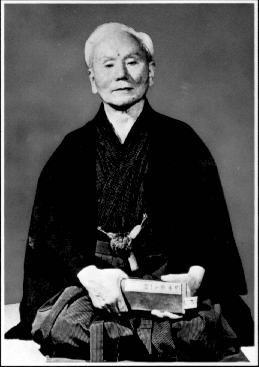Membership
Beginners and people with experience in other martial arts are always welcome. Our sessions are always open to watch. If you want to just try it out for a single training session bring comfortable sport clothes - we would suggest a pair of track pants and a T-shirt. We train barefoot so please no shoes in the studio. If you decide to join the club you will be asked to fill out a form containing your contact information and information about your health insurance. For more information just drop by our club, or send us an email.
Our club is supported by a yearly membership fee of 170 euros usually paid to the club at the beginning of September each year when we start our training sessions. In addition, each member must also pay an extra 30 euros which includes the federation membership fee and insurance (to be payed via your own account at the moment when your insurance needs to be renewed - this can be at a different time of the year for everyone, depending on when you started).
Affiliation
We are affiliated with the Belgian branch of the Shotokan Karate International Federation located in Tokyo, Japan.

Master Gichin Funakoshi
"Karate is like hot water.
If you do not give heat constantly
it will again become cold."
Meaning and origins of Karate
Karate is a system of empty hand fighting developed intially on Okinawa Island and later in the rest of Japan mainland. It is based upon punching, kicking, blocking, and striking. Karate involves simple motions that depend upon proper timing and distancing in order to be effective, rather than complicated techniques. Hand techniques are more often used rather than legs because it is considered that hand blows are faster and more precise. Advanced practitioners often use combinations of both hand and leg techniques as it is more effective in sparring and self defence.
Karate literally means "empty hand" - "kara" empty and "te" hand - but often the idea of emptyness is referred to as "empty mind". One has to be calm and in harmony with himself and the surrounding world in order to be able to react appropriately in dangerous situations. This idea can be trasfered and applied also to the every day life.
Methods of training
The traditional traning in karate consists of three different methods. Basic techniques or "kihon", formal exercises called "kata", and sparring "kumite". The basics teach the practitioners the proper form of the karate technique and are an excellent exercise for the whole body. Kata is basically a prearranged sequence of moves and techniques. It helps for better understanding of the concepts of karate. It also helps to develop good balance and sense of orientation. Many people call kata "the heart of karate". In Shotokan there are 26 official katas. The third method of training in karate is kumite. This is when practitioners apply and practice their skills through sparring with a partner. There are several forms of kumite starting with the most basic prearranged combinations and ending with the free sparring. A serious karate-ka (karate practitioner) should include in his/her training program all of the three training methods.
Dojo rules
Often an organization or a group of people has its own rules. The rules of our club or dojo (place for training) come from the traditions in karate. Some of them teach the members the basic etiquette and others are designed simply for safety reasons. Some of the basic rules are:
* Always bow before entering and leaving the dojo and say 'OSS'.
* If you are late to class, kneel at the edge of the dojo floor and wait for an instructor to tell you to enter. Then bow and say 'OSS' while still in the seiza position, and enter. If you have a knee problem do not kneel in seiza - just stand in a natural stance and wait.
* Show courtesy and respect to the instructors and fellow students.
* Do not chew gum or any other substance in class. It is considered disrespectful and it is dangerous for your health if swallowed during the training session.
* No talking during class. Concentrate on what you are doing.
* Keep your uniform clean and tailored properly. If your uniform becomes loose or untidy, turn your back to the shomen (front of the dojo) and quickly fix it.
* Keep your toenails and fingernails trimmed short and clean. For safety reasons, jewelry must be removed or taped. If you obtain any injury during training, inform the instructor immediately.
* Always bow to the black belts when entering the dojo. Bow to the senior instructor first, then to the other instructors in order of their rank. When bowing, say 'OSS' loud and strong.
* When an instructor asks if you understand, the entire class should answer with a loud 'OSS' in unison. If you do not understand, raise your hand and tell the instructor.
* When moving in the dojo, never walk directly in front of someone unless it cannot be avoided. It is not polite to cross in front someone.
* Every time you pair with a new partner for any exercise, bow. Every time you're about to switch partners, bow to your old partner before moving on to the next.
"The Way is not static and dead;
Learn from the old Masters,
Do not worship them;
Learn from your Teachers,
Do not blindly follow them;
Learn from your Students,
Do not assume you know all the Truth."